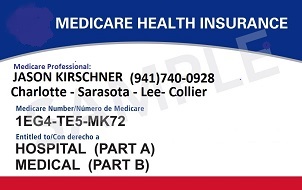Medicare Part D is a prescription drug coverage program offered by the U.S. federal government for people who are enrolled in Medicare. Medicare Part D is designed to help Medicare beneficiaries pay for the cost of prescription drugs and is provided by private insurance companies that have contracts with the federal government.
Medicare Part D plans cover a range of prescription drugs, including both brand-name and generic drugs. Each Medicare Part D plan has its own list of covered drugs, called a formulary. The formulary specifies which drugs are covered and at what cost, and may change from year to year.
To enroll in a Medicare Part D plan, you must be enrolled in Medicare Part A and/or Part B. You can enroll in a Medicare Part D plan during your Initial Enrollment Period (IEP), which is a seven-month period that begins three months before your 65th birthday month and ends three months after your birthday month. You can also enroll in a Medicare Part D plan during the Annual Enrollment Period (AEP), which is from October 15th to December 7th each year.
There are different Medicare Part D plans available, and the costs and coverage can vary depending on the plan you choose. It's important to compare plans and choose the one that best meets your needs and budget.
How to receive prescription drug coverage
There are two main ways to get Medicare Part D prescription drug coverage:
- Stand-alone Medicare Part D Prescription Drug Plan: You can enroll in a stand-alone Medicare Part D Prescription Drug Plan (PDP) if you have Original Medicare (Part A and/or Part B) or a Medicare Advantage plan that does not include prescription drug coverage (MA-only plan). These plans are offered by private insurance companies that are approved by Medicare. You can enroll in a Medicare Part D PDP during your Initial Enrollment Period (IEP), which is a seven-month period that begins three months before your 65th birthday month and ends three months after your birthday month. You can also enroll during the Annual Enrollment Period (AEP), which is from October 15th to December 7th each year.
- Medicare Advantage Prescription Drug Plan (MAPD): You can enroll in a Medicare Advantage Prescription Drug Plan (MA-PD) if you have Original Medicare (Part A and/or Part B) and live in an area where Medicare Advantage plans are offered. These plans are offered by private insurance companies and provide both medical and prescription drug coverage. You can enroll in a Medicare Advantage plan during your Initial Enrollment Period (IEP) or during the Annual Enrollment Period (AEP).
It's important to compare plans and choose the one that best meets your needs and budget. When comparing plans, you should consider factors such as the monthly premium, deductible, copayments, and coinsurance, as well as the formulary and drug coverage rules.
For help comparing plan costs, contact your Florida Medicare benefit broker agent Jason Kirschner at 1(941)740-0928.
Creditable Drug Coverage
Creditable drug coverage refers to prescription drug coverage that is expected to pay, on average, at least as much as standard Medicare Part D prescription drug coverage. This coverage can come from a variety of sources, including an employer-sponsored health plan, a union plan, or the Department of Veterans Affairs (VA) health program.
If you have creditable drug coverage, you can delay enrolling in a Medicare Part D plan without incurring a late enrollment penalty. However, you will need to provide proof of your creditable drug coverage to Medicare. This proof is usually provided by your employer or health plan.
If you lose your creditable drug coverage, you will have a special enrollment period to enroll in a Medicare Part D plan without penalty. This special enrollment period lasts for 63 days from the date your creditable drug coverage ends.
It's important to note that if you don't have creditable drug coverage and don't enroll in a Medicare Part D plan during your Initial Enrollment Period (IEP) or during a special enrollment period, you may have to pay a late enrollment penalty if you choose to enroll later on. This penalty is calculated based on the number of months you went without creditable drug coverage or Medicare Part D coverage.


